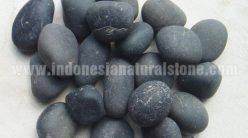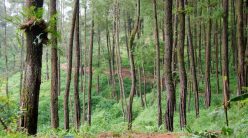by Jennifer Dick
uoguelph.ca/research/news
One of the oldest Chinese delicacies – a bird’s nest that’s made from the saliva of the male swiftlet, and sells upwards for $4,000 per pound – has food experts around the world swooning for a taste of what’s called the “food of the emperor,” or the “caviar of the East.”
Only the male swiftlet, a small swallow native to Southeast Asia, can make the tiny crescent-shaped nests once each year before mating. The nest’s small size (it weighs only a few grams), combined with the hazards undertaken by nest harvesters, explain the high cost.
But as with any high-priced commodity, knock-offs are inevitable. And with upscale restaurant prices hovering around $80 per serving of a dish of “bird’s nest soup,” diners want to make sure they’re getting the real McCoy.
Enter Discovery Channel. When it found the red or “blood” coloured nests fetching a premium at least three times greater than white nests – and saw the potential for the unscrupulous adulteration of the white nests, to turn them red — they asked University of Guelph food scientist Dr. Massimo Marcone to step in for some analysis.
The Discovery Channel also wondered if there was a nutritional difference causing the price discrepancy.
It turns out there isn’t.
“Value is a relative term,” says Marcone. “Chemically, there isn’t enough of a difference between the nests to justify the price difference. But this is the so-called emperor’s food, and the red nests are rarer. When someone offers this nest to a person, they offer their heart, their very best – in that sense maybe the value is worth more than we even estimate.”
North America is the second largest market in the world for bird’s nests, largely because of the traditional medicine market. Each year over 17 million nests are collected in Indonesia and its neighbouring countries for export, and demand seems to be increasing. This leaves many wondering about the effects of this trend on the swiflet populations, especially regarding harvesting procedures.
“There are regulations about harvesting – they are supposed to occur once the fledglings have gone but because of the high price the harvesters receive for the nests, many don’t follow the rules,” says Marcone. “For some it’s a choice between conservation and putting food on the table.”
The Chinese bird’s nest market is also a threat to the people who harvest the nests. Nest harvesting is difficult and dangerous. It involves cave wall climbing and there’s a high risk of getting caught in flooded caves.
Work is being done to improve the conservation efforts for these birds. Some groups have developed barn-like structures so swiftlets can raise their young in safety. Harvesting is done when the fledglings have matured and left the nests. Marcone says creating such an industry could be a source of income for local people as well as meet the demands of the bird nest export market.
But back to nutrition. Marcone has studied the differences in the coloured nests’ compositions, and he says they’re comprised mainly of protein and carbohydrates. Contrary to the belief that the “blood” nests are made from blood, they’re simply rarer, and the nutrient composition varies only slightly form the white nests.
And as for the dishonest harvesters who try to dye the nests red to fetch a higher price, there’s no fooling Marcone.
“The nests that are genuinely red are permanently so,” he says. “If it leeches too much red, it’s dye.”





